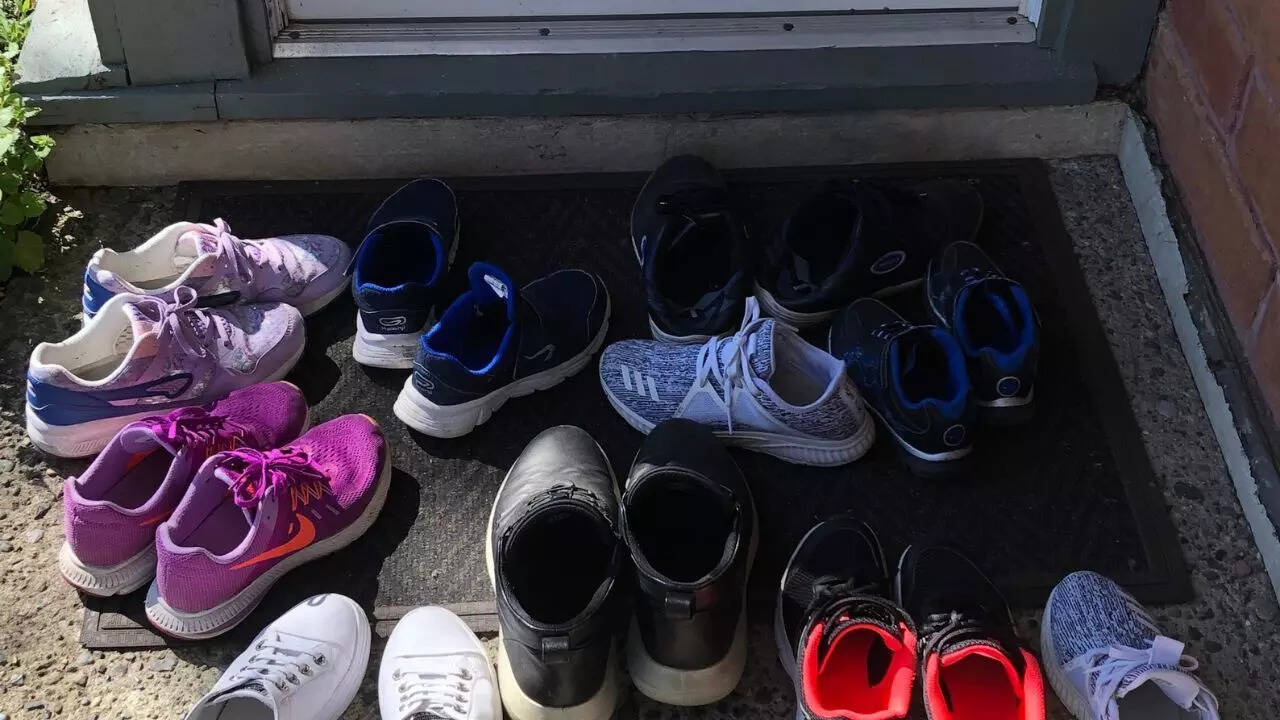ARTICLE AD BOX

Dust is one of the most persistent problems in every household. No matter how often you clean, it still finds its way onto shelves, curtains, carpets, and hidden corners. Dust particles come in through open doors and windows, cling to clothes and shoes, and are often carried inside by pets.
Beyond making your home look untidy, dust can trigger allergies, aggravate asthma, and lower overall indoor air quality. While you can’t eliminate it completely, simple habits and smart adjustments can dramatically reduce buildup. Here are eight effective ways to prevent dust and keep your home cleaner and air fresher.
8 effective ways to block dust: Enjoy a fresher home and healthier air
Reduce clutter on surfaces
Cluttered countertops, messy shelves, and overfilled tables act like magnets for dust. The more objects you leave out, the more surface area dust has to land on.
Keeping spaces tidy makes it easier to clean and limits the amount of buildup. Storage bins, closed cabinets, and baskets are great options for keeping belongings organised and dust-free. Even something as simple as keeping closet doors closed can prevent dust from settling on your clothes and linens.
A minimalist approach to home organisation can go a long way in keeping your air fresher.
Use air purification devices
Air purifiers are one of the most effective tools for keeping dust levels under control.
These devices are designed with HEPA filters that trap tiny airborne particles like dust, pollen, and pet dander before they settle on surfaces. You can place portable purifiers in bedrooms or living areas for targeted air cleaning, or invest in a whole-house system connected to your HVAC unit. Regularly running an air purifier not only reduces visible dust but also helps people with allergies and breathing difficulties sleep and breathe more comfortably.
Keep up with HVAC maintenance
Your home’s heating and cooling system plays a big role in circulating dust. If the filters are dirty or outdated, they can push particles back into your living space. Replacing filters on schedule and choosing high-MERV filters can capture more microscopic dust and allergens. It’s also wise to have your air ducts professionally cleaned once a year, especially if you own pets. Exhaust fans in the kitchen and bathroom can further reduce airborne particles while improving ventilation.
Consistent HVAC care not only helps with dust prevention but also keeps your system running efficiently.
Limit fabric-heavy décor
While carpets, curtains, and fabric sofas add warmth and comfort, they also trap huge amounts of dust, hair, and debris. When disturbed, these particles easily become airborne, lowering indoor air quality. Reducing fabric-heavy décor—such as switching from wall-to-wall carpeting to hardwood floors or replacing cloth blinds with wooden or plastic alternatives—can make dust management much easier.
If you do have fabric furniture or curtains, regular vacuuming and washing are essential to stop dust from accumulating.
Keeping extra blankets, cushions, or bedding stored away when not in use can also reduce the load.

Brush and bath pets regularly
Pets are a beloved part of the family, but they bring in their share of dirt, dander, and loose hair. These particles quickly contribute to household dust, especially during shedding seasons. Brushing your pets outdoors and bathing them regularly helps keep excess fur and dander under control.
Washing pet bedding and vacuuming areas where your pets spend the most time will also cut down on allergens in the air. A consistent grooming routine not only reduces dust but also keeps your furry companions healthier and more comfortable.
Use doormats and remove shoes indoors

One of the easiest ways to prevent dust from entering your home is by tackling it at the doorstep. Placing sturdy doormats at all entrances allows you and your guests to wipe off dirt and debris before stepping inside.
Encouraging a no-shoes policy indoors can dramatically reduce the amount of dust, pollen, and bacteria tracked in. The same goes for pets—wiping their paws after walks helps minimise how much dirt enters the home.
Small preventative measures like these protect both your floors and your indoor air quality.
Clean with the right tools and frequency
No matter how many preventative steps you take, some dust will always settle. The key is to clean it regularly and effectively.
Microfibre cloths are excellent because they trap dust rather than spreading it around. Vacuuming at least once or twice a week with a HEPA-filter vacuum ensures that even fine particles are removed from carpets and upholstery. Washing bedding weekly, wiping ceiling fans, and dusting overlooked spots such as baseboards or behind furniture are also important.
A consistent cleaning schedule not only keeps your home looking fresh but also greatly reduces airborne allergens.
Seal gaps and cracks around doors and windows
Even the smallest cracks in windows and doors can let dust flow in from the outside. Sealing these gaps with weatherstripping or caulking can drastically cut down on dust entry. This step also has added benefits, such as improving energy efficiency and preventing moisture damage. By blocking dust at its entry points, you reduce how much cleaning is required inside while also making your home more comfortable year-round.Dust may be an unavoidable part of indoor life, but with the right strategies, you can prevent it from becoming overwhelming. From air purifiers and HVAC care to simple lifestyle changes like reducing clutter, limiting fabrics, and grooming pets, small steps add up to a big difference. By being proactive, you’ll not only spend less time dusting but also enjoy cleaner, healthier air in your home every day.Also Read: Rubbing alcohol for pest control: An affordable and effective home remedy



.png)
.png)
.png)
















 1 day ago
5
1 day ago
5







 English (US) ·
English (US) ·